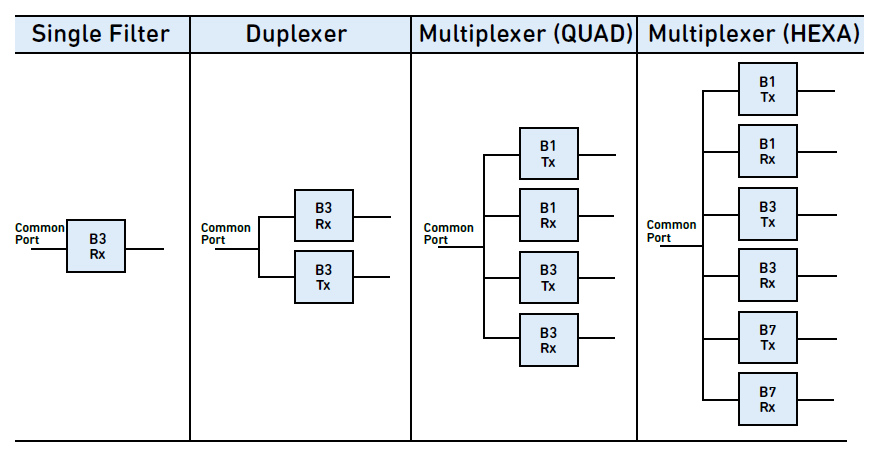Foreword
The rapid growth of mobile wireless data and 4G LTE networks has led to the growing demand for new frequency bands and combined frequency bands through carrier aggregation to accommodate wireless traffic. 3G network only uses about five frequency bands. LTE network now uses more than 40 frequency bands. With the arrival of 5g, the number of frequency bands will further increase.
Interconnected devices must transmit cellular signals, Wi Fi signals, Bluetooth signals and GPS signals across multiple frequency bands, while avoiding interference. We may immediately think of smartphones, but this is true of shark fins installed on the roof, cellular base stations, radar and communication systems, and industrial, scientific or medical applications connected to the Internet of things (IOT).
What is RF filter?
A radio frequency filter (RF filter) is a device that allows certain radio frequencies to pass through while blocking others. This is done in order to maintain a clear wireless communication signal. There are many different types of filters, each designed for a specific purpose.
Why are RF filters so important?
RF filters can help get rid of noise or reduce interference from external signals that could affect the quality or performance of a communication system. If these proper filters are not in place, it could lead to interference in the signal frequencies and ultimately hurt the communication process.
A smartphone without a filter is a brick
Like antennas, filters are becoming an increasingly important part of networking mixers. The device will receive various frequencies, and the filter can let the required frequency pass through while suppressing unwanted frequencies. In other words, it’s like the ring of John Tolkien’s “the ring of the past!” Today’s devices are usually equipped with 30 to 40 filters to avoid interference. This situation will become more complicated as more filters are required for the next generation of high-end smartphones.
Challenges RF filter designs are facing today.
Filters are essential tools for RF design engineers, but they also face many challenges.
For starters, the performance of the filter will change when the temperature changes.
Today, filters in various devices can withstand an average temperature of 60 degrees Celsius (140 degrees Fahrenheit) or higher, while indoor filters can withstand an average temperature of 25 degrees Celsius (77 degrees Fahrenheit), and filters embedded in shark fins or roof can withstand even higher temperatures. The higher the temperature of the filter, the harder it is to filter out a specific frequency, and the more likely the signal is to “drift” to adjacent frequency bands.
Since many newly allocated frequency bands are very close to the existing frequency bands, it is particularly important to manage temperature drift. At the same time, carrier aggregation (CA) is also developing rapidly. Cellular service providers can combine up to five carrier channels to improve network performance, in which accurate filtering is a prerequisite.
In order to solve the temperature problem, the RF industry is developing low drift and drift-free filter technology. Surface acoustic wave (SAW) and bulk acoustic wave (BAW) filters can still maintain highly stable performance when the temperature changes, which can meet the stringent performance requirements of emerging equipment.

Duplexers, triplers, quadruples, and even sexers are collectively referred to as multiplexers. Multiplexers can integrate multiple filters into one device, so as to help designers save space, simplify design, meet performance requirements, and avoid interference.
The final challenge is the Wi-Fi signal
Although some people may still use smartphones to send text messages and make phone calls, most people use smartphones to browse the web, watch videos, and access social media. Because the frequency bands of LTE and Wi-Fi are very close, if the Wi-Fi signal is not filtered, the sensitivity of the device to receiving the LTE signal will be reduced. The reduced sensitivity will bring us a lot of trouble, such as call dropping or interruption.
Therefore, we need a special filter. A coexistence filter can make Wi-Fi and LTE signals coexist harmoniously, which is absolutely worthy of the name. This filter can suppress closely adjacent frequencies so that we don’t miss our mother’s phone when browsing our friends’ ticket circle stories. They also play an important role in the Internet of Vehicles, because LTE, Wi-Fi, Bluetooth, GPS, and vehicle to vehicle (V2V), and vehicle to infrastructure (V2I) communication must coexist without interference.
